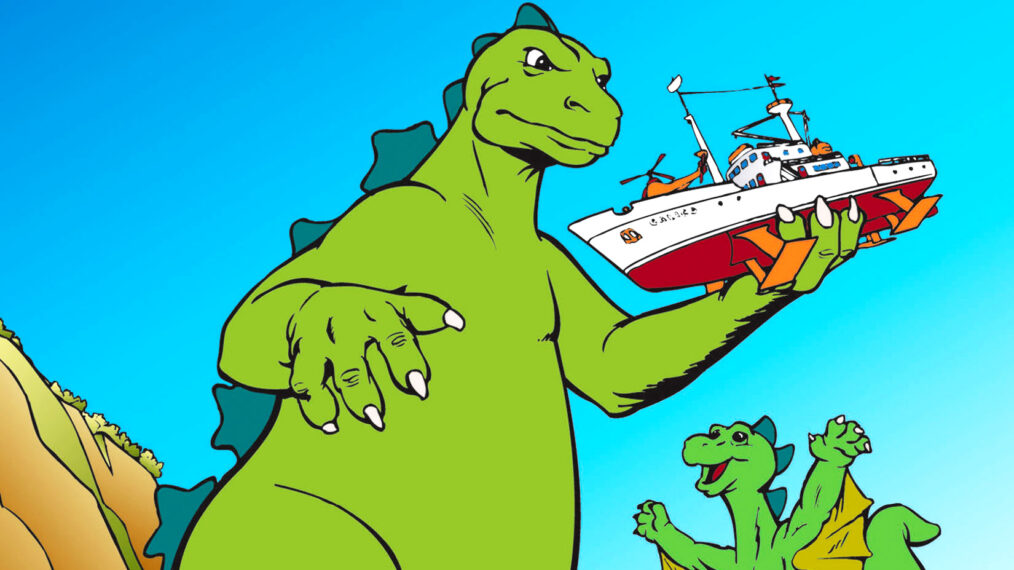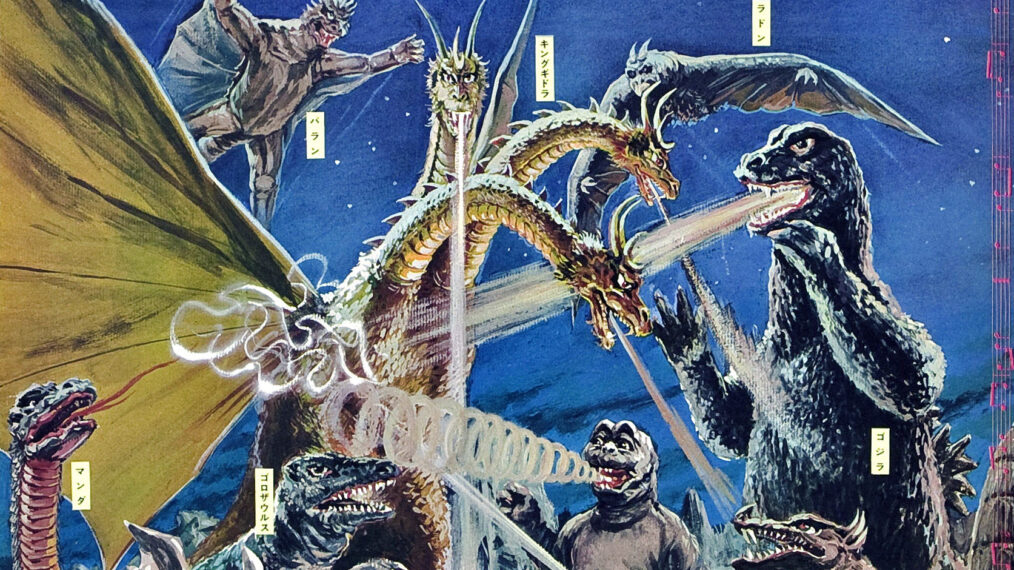In 1974, ‘Godzilla vs. Mechagodzilla’ Introduced Mechagodzilla & King Caesar to the Godzilla Universe
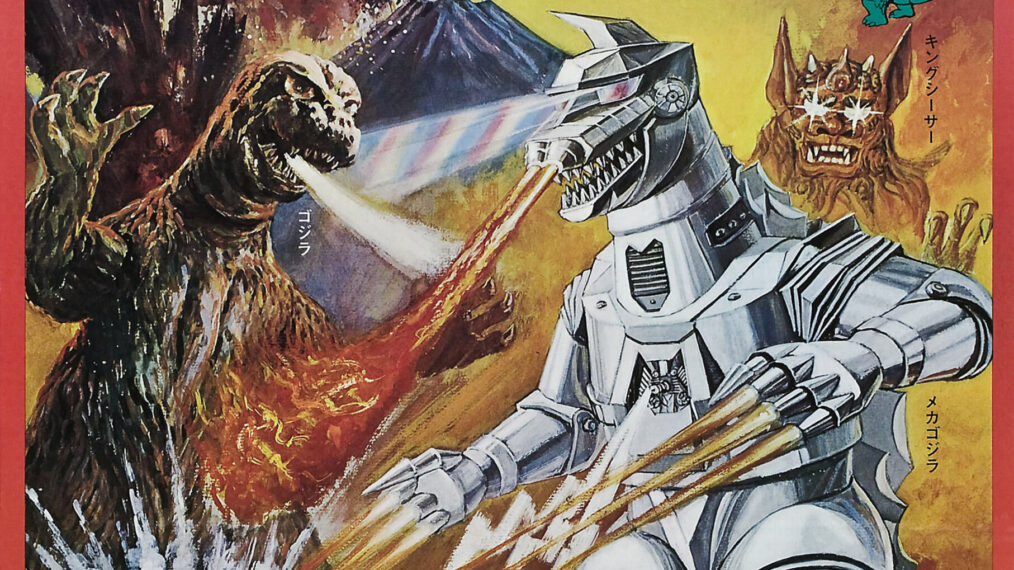
The 1967 Toho production King Kong Escapes gave kaiju fans a memorable Mechani-Kong for Kong to battle, but it would be another seven years before Godzilla, the King of the Monsters and the king among Toho’s intellectual properties, received a robotic double enemy of his own.
That finally came in Godzilla vs. Mechagodzilla. The film opened in Japan on March 21, 1974, during the 20th anniversary celebration of Godzilla, who first stomped onto the big screen in 1954.
It introduced audiences to not only one of Godzilla’s greatest and coolest-looking foes — Mechagodzilla — but also one of his cutest, albeit short-term, allies in King Caesar, the lion-like guardian god of Okinawa.
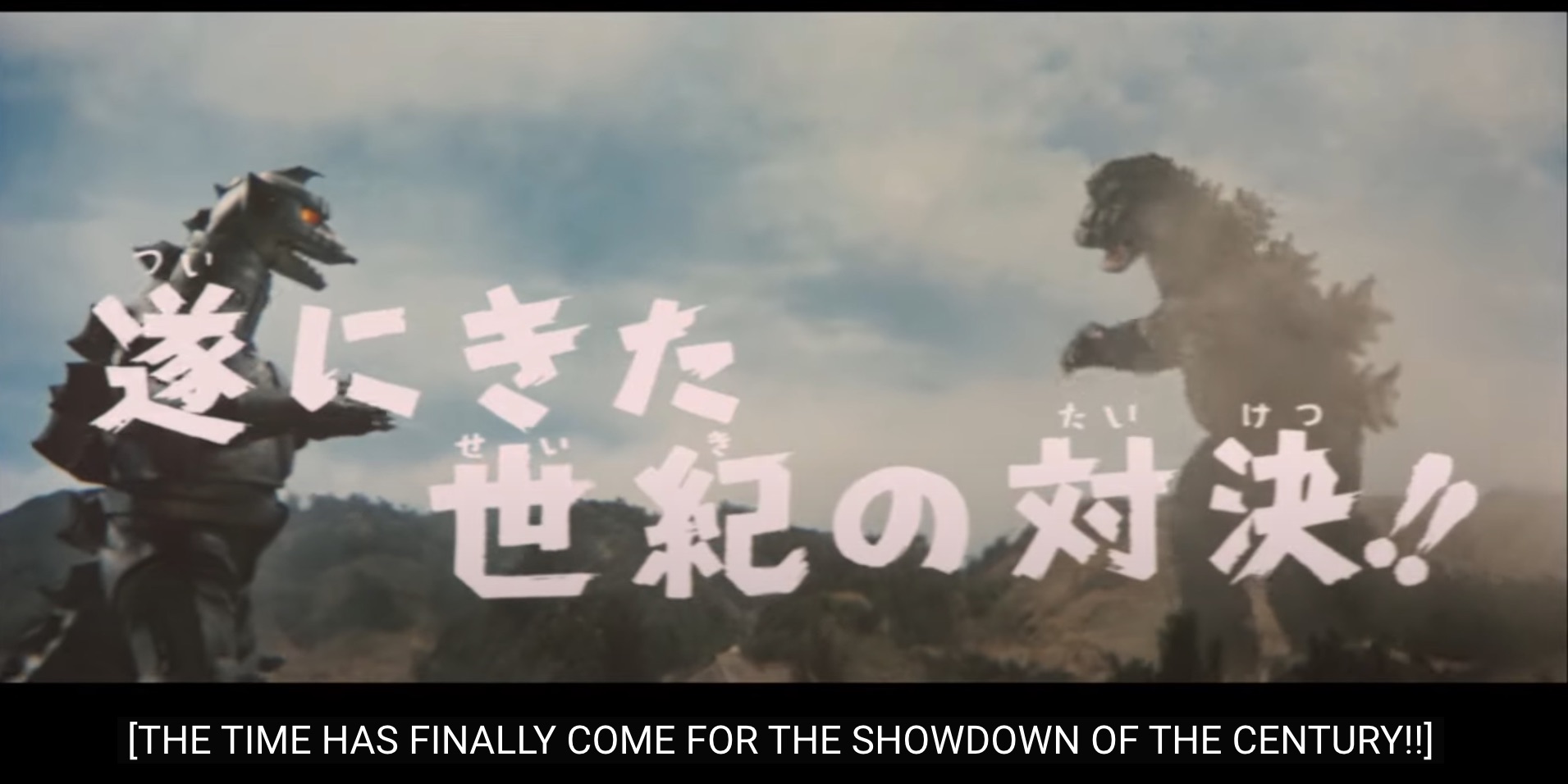
™ & © Toho Co., Ltd./Screenshot from youtube.com/@GodzillaToho
The boxing-like hype in the scene from the movie’s final clash between Godzilla and Mechagodzilla pictured above is from this original Japanese trailer for the film (hit the closed-captioning icon for English subtitles):
This movie did not hit American theaters until around 1977. At that time, I knew it under its U.S. titles of, first, Godzilla vs. the Bionic Monster, and then Godzilla vs. the Cosmic Monster, when I was a kid reading about it in Famous Monsters of Filmland.
Below is a poster from the U.S. release using the “Bionic” title. The action-packed illustration is a full shot from the Japanese poster that is partially seen at the top of the page. As expanded below, you can see, in the lower left, that our boy Anguirus is also in this movie!
Beneath the poster is a quick trailer for the American release, which, frankly, does not maintain the same sort of excited hype that the Japanese one does.
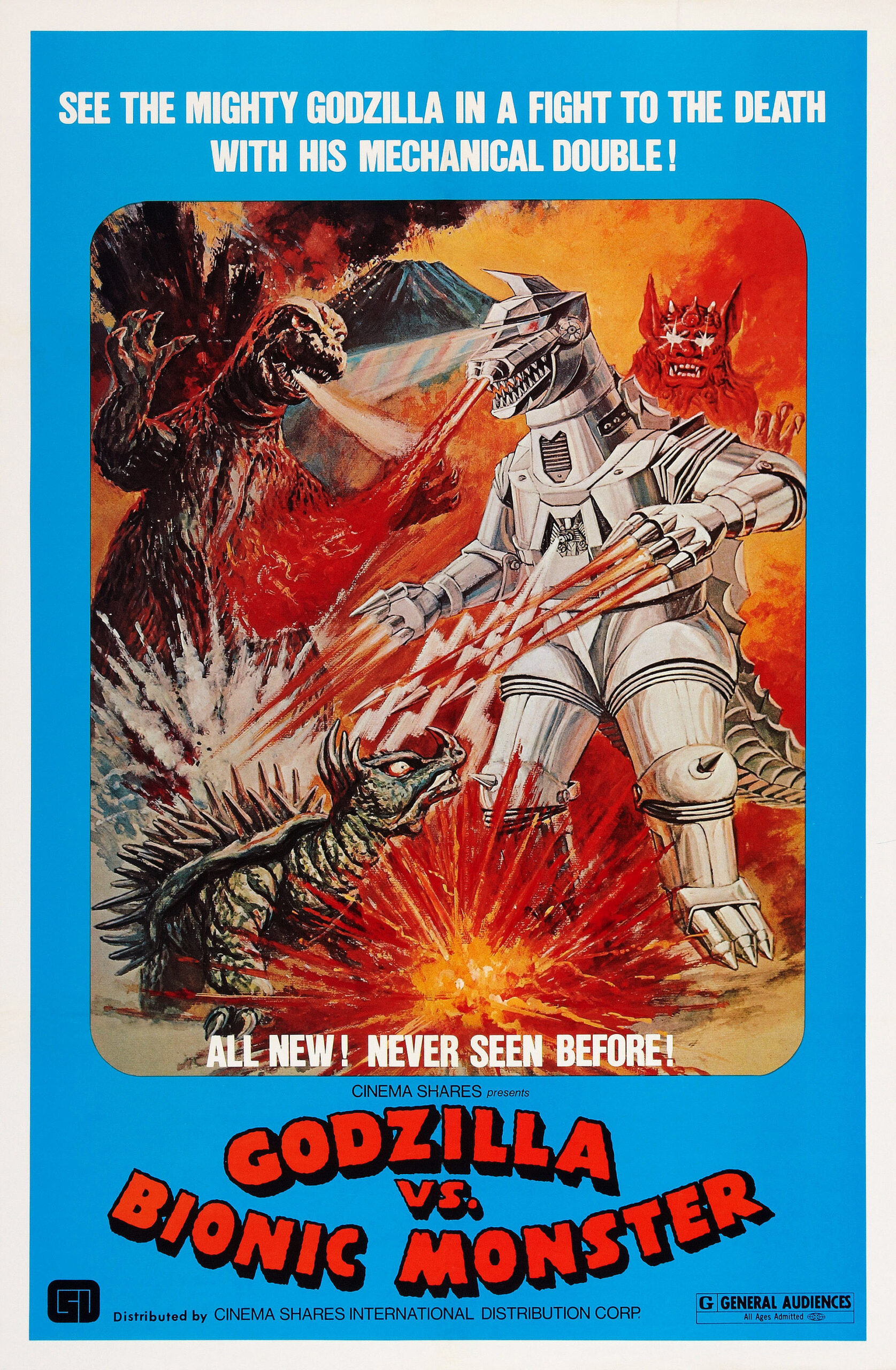
Courtesy Everett Collection
By using the Bionic Monster retitling, Cinema Shares, which distributed Godzilla vs. Mechagodzilla in the States, was obviously trying to cash in on the popularity of a couple of American TV shows about a bionic man and a bionic woman. From what I gather, the producers behind those series were not too thrilled by this use, so Cinema Shares quickly adopted “Cosmic” instead of “Bionic” to avoid any legal entanglements.
Whatever it’s called, I find the movie, directed by Jun Fukuda, to be a nice pickup in quality after the pretty weak Godzilla vs. Gigan (1972) and Godzilla vs. Megalon (1973), which had both also been helmed by Fukuda. (While Megalon was the first Godzilla movie I saw in theaters, possibly the first Godzilla film I ever saw, and I loved it as a kid, I’m not too big a fan of it now.)
I’m not sure why I didn’t similarly see Godzilla vs. Mechagodzilla when it was first in theaters; it seems like something I would have pestered my parents to take me to see. I don’t think I did see it for the first time until much later, since I can’t recall it being in the rotation of the creature-feature shows I used to watch on local TV. It’s likely it never made it to the theaters in my smaller town.
But it has become one of my favorites among the early Godzilla films. The Okinawa setting that is the backdrop for a good part of the movie, and the use of some of that area’s mythology in the story, is especially appealing to me. I like when Godzilla movies have visited different locations outside of Tokyo.
I also enjoy how the film brings back veteran Toho/Godzilla stars Akihiko Hirata, Hiroshi Koizumi and Kenji Sahara after a few years (Hirada has a larger role key to the story than the others).
Among new cast members, I find the commander of Black Hole Planet 3 (played by Gorō Mutsumi, who returned the following year as the alien leader in Terror of Mechagodzilla) to be a hilarious character. He is controlling Mechagodzilla in an attempt to conquer Earth, but he is also among the chillest movie villains you’ll see. He seems to almost always have a cigar and/or snifter of booze in his hand and acts mostly pretty nonchalant about things even as his robot is getting beaten down by Godzilla.
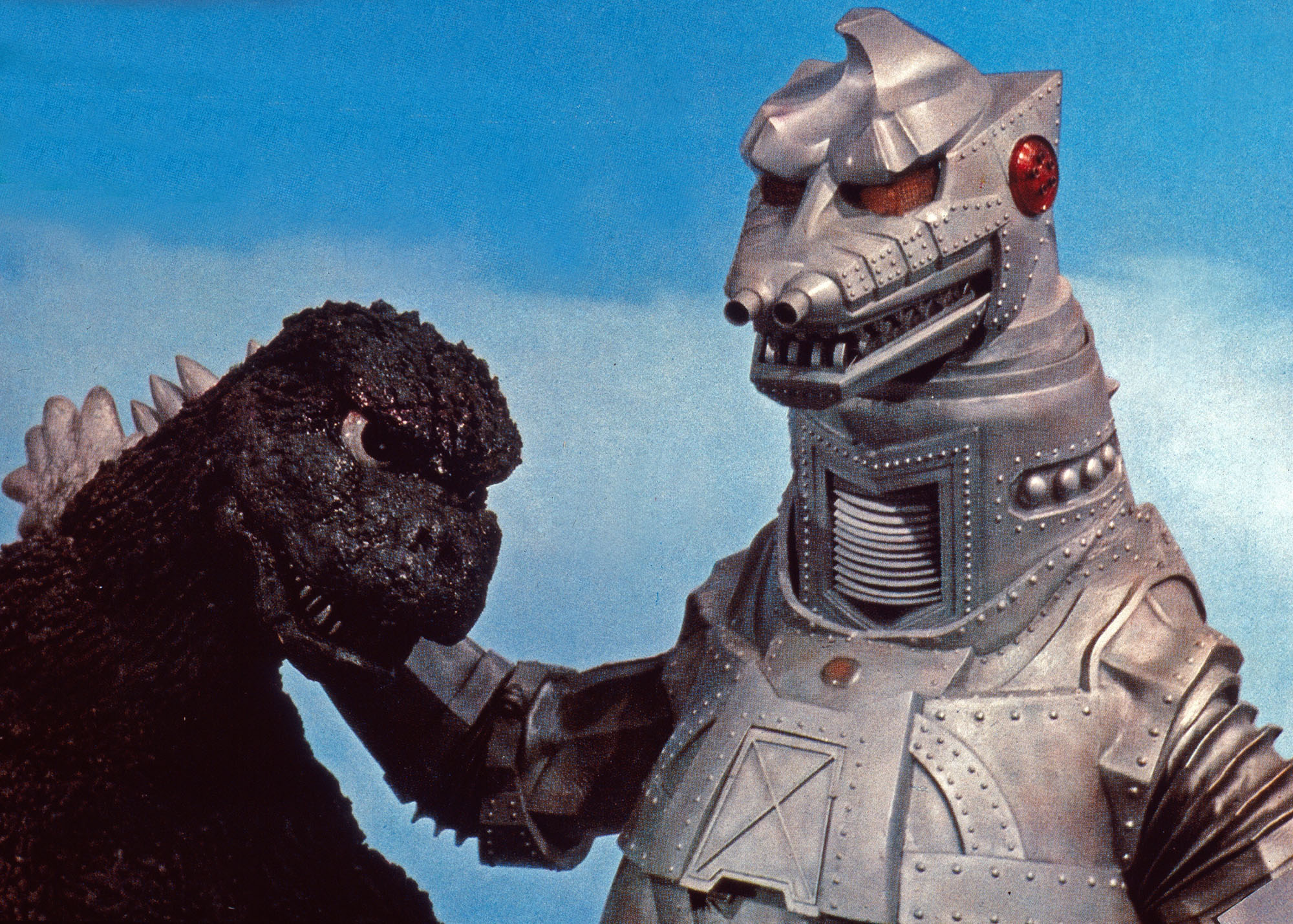
FilmPublicityArchive/United Archives via Getty Images
Another outstanding feature of the film is its musical score by Masaru Sato. Akira Ifukube may be the most renowned composer to have scored Godzilla movies, but Sato is terrific as well, and in a wonderfully different way. Sato’s music here sounds jazzy and very ’70s at times but also maintains a classic kaiju feel throughout.
You can hear some of that in the video below, a suite of some musical themes from Godzilla vs. Mechagodzilla.
One of the more memorable pieces of music is the track called “Godzilla vs. Anguirus.” That is heard early in the film when poor Anguirus faces off against Godzilla, the first time these two buddies went at each other since 1955’s Godzilla Raids Again nearly 20 years earlier.
Of course, what Anguirus was actually fighting may have looked like Godzilla to audiences at first but was actually Mechagodzilla in disguise. And, despite how tough Anguirus has proven to be in his various film appearances, seeing him get his ass kicked here is still hard for me to watch, especially when the “Godzilla” doppelganger breaks his jaw. The pitiful sound that Anguirus makes during that and as he walks off in defeat is heartbreaking.
You can hear the “Godzilla vs. Anguirus” track in the video below, which offers a nice montage of memorable scenes from Godzilla vs. Mechagodzilla.
I’ve also discovered only just recently that there was a version of the Godzilla vs. Mechagodzilla battle music that had lyrics, but was not featured in the movie. (It’s always cool to continue learning new things about the movies starring Godzilla and friends even after all these years of fandom.)
The very catchy song, “Attack/Defeat Mechagodzilla,” was performed by Beru-Bera Lin, who plays Princess Nami in the film and sings the more famous King Caesar song that is featured in it.
Speaking of King Caesar, well, he is certainly a character. Like Anguirus, he strikes me as simultaneously being tough and also like goofy dog, especially when his ears fly up in high alert:
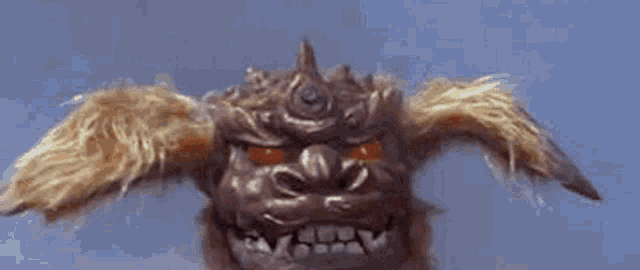
King Caesar is another one of those Toho kaiju, like Mothra, who needs to be reawakened by a lovely song that takes a couple of minutes to perform in the midst of a crisis that the creatures are needed to help avert.
Here is the version of King Caesar’s song heard in the movie:
And below is the longer version that I heard first, before I had even seen the movie.
It is on a terrific CD called The Best of Godzilla: 1954-1975 that I bought in early 2000s. It offers a very nice collection of original music and sound effects from the original run of Godzilla movies, the so-called “Showa” era of the franchise. (There is also a Best of Godzilla: 1984-1995 album.) Certainly worth a listen/purchase/download for Godzilla fans.
When King Caesar is awakened by Nami after her song, he holds his own against Mechagodzilla for a while but ultimately starts to become overwhelmed.
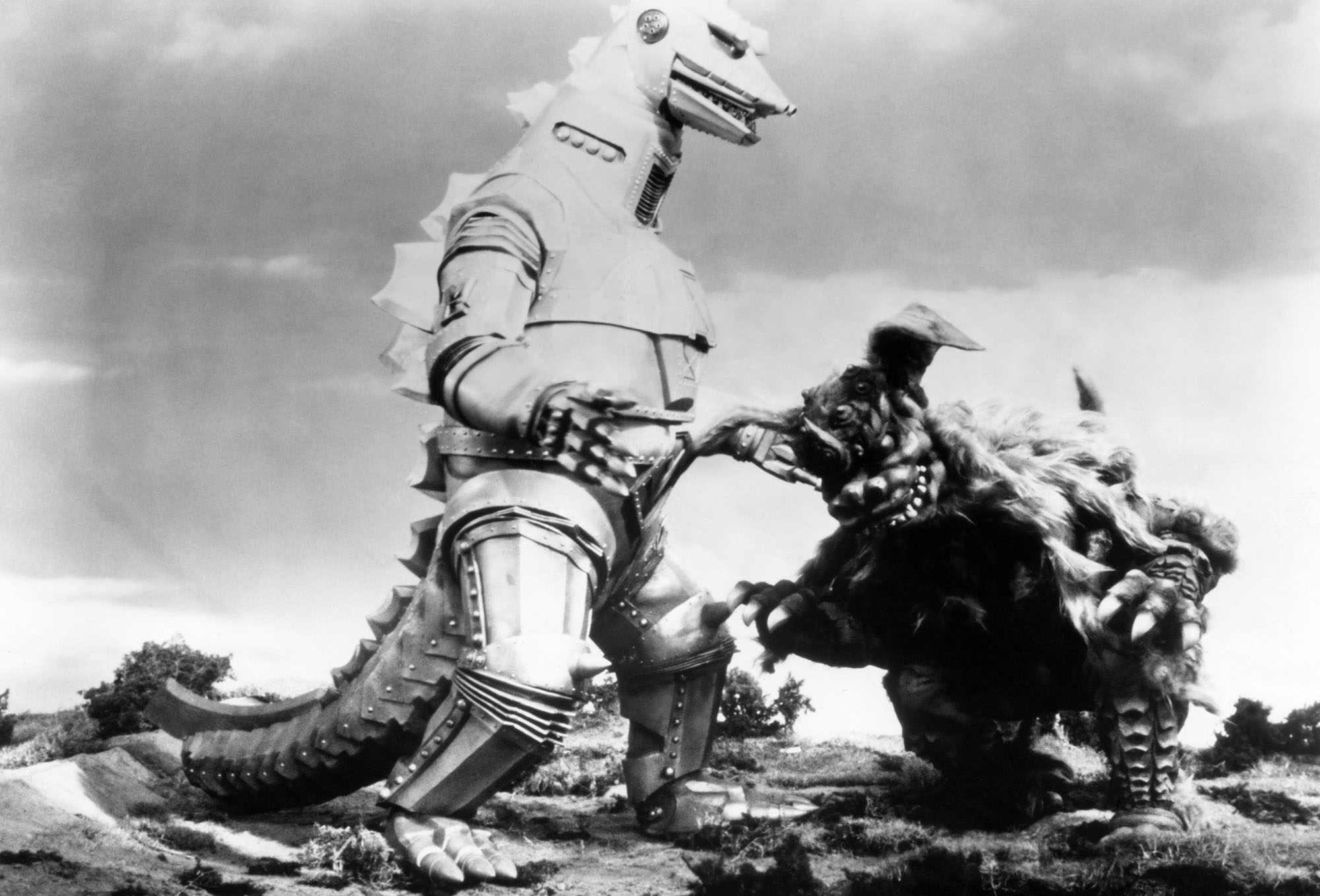
™ & © Toho Co., Ltd./Courtesy Everett Collection
But just then, the real Godzilla shows up to help in the final battle on Okinawa. During this fight, Godzilla ultimately turns himself into a living magnet to thwart the metallic Mechagodzilla, which is certainly weird, but still not the weirdest thing I’ve ever seen in a Godzilla movie.
This fight also features the only time I remember in these early films where Godzilla bleeds during a battle; in fact, blood even spurts from his neck at one point after he is struck by a laser blast from Mechagodzilla.
So the G rating for this movie indicated on the American movie posters above seems odd. Between the scene of Godzilla bleeding, and the scene with poor Anguirus getting his jaw broken, I would have figured a PG rating for the film. But, hell — even the very intense Jaws was only rated PG around this time, so in the ’70s, I guess either the movie ratings board was more lenient, or moviegoing kids were tougher, or both.
Both Mechagodzilla and King Caesar have remained fan-favorite kaiju characters in the half-century since Godzilla vs. Mechagodzilla premiered. King Caesar’s staying power is particularly impressive, since as far as I know he’s only appeared on the big screen in a significant way once more, in Godzilla: Final Wars (2004), and even that was not for very long.
Mechagodzilla has recurred more often in the franchise, including right away in 1975’s Terror of Mechgodzilla, the last Godzilla film of the Showa era.
He returned in various other forms/appearances in not only other Toho productions in the ‘90s and 2000s — Godzilla vs. Mechagodzilla II (1993), Godzilla Against Mechagodzilla (2002) and Godzilla: Tokyo S.O.S. (2003) — but also as part of the American “Monsterverse” (2021’s Godzilla vs. Kong).
Mechagodzilla has also proven his pop-culture staying power as one of the most popular movie robots ever by his appearances in numerous video games and even with a very memorable cameo in Steven Spielberg’s 2018 adaptation of Ready Player One:

